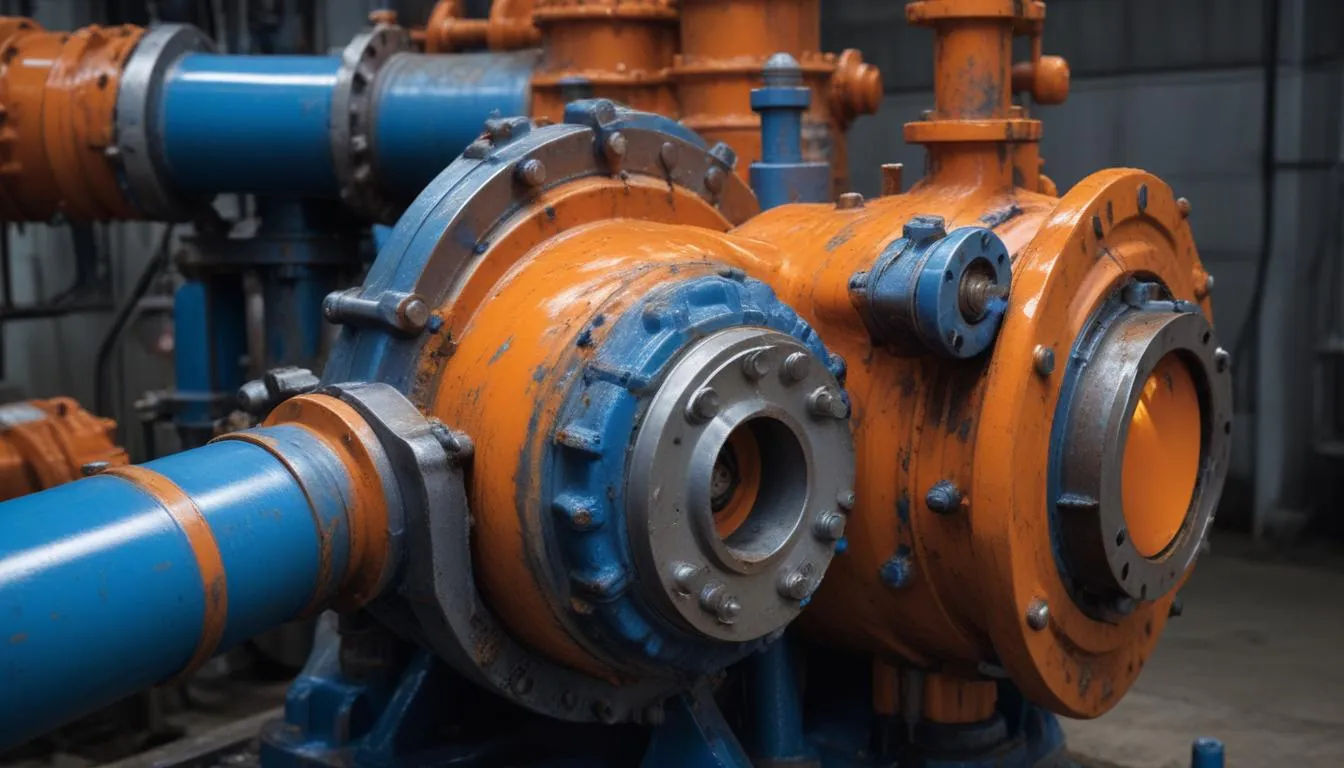 Several factors influence the overall pump lifespan, and understanding them is crucial for accurate predictions regarding the longevity and performance of pumps in various applications. These factors can be grouped into several categories, including operational conditions, materials used, and maintenance practices.
Several factors influence the overall pump lifespan, and understanding them is crucial for accurate predictions regarding the longevity and performance of pumps in various applications. These factors can be grouped into several categories, including operational conditions, materials used, and maintenance practices.
- Operational Conditions: The environment in which a pump operates can significantly affect its durability. Key conditions include:
- Fluid Characteristics: The type of fluid being pumped, including viscosity, corrosiveness, and temperature, plays a vital role. For instance, corrosive fluids can accelerate wear on pump components.
- Flow Rate and Pressure: Operating outside the recommended flow rates and pressures can lead to excess stress on the pump, shortening its lifespan.
- Abrasive Materials: Pumps handling materials with high solid content can suffer from increased wear and tear, impacting overall performance.
- Materials Used: The construction materials of a pump directly correlate to its resistance to wear and environmental factors. For example:
- Metal vs. Composite: While metal pumps offer durability, composite materials may resist corrosion better in specific applications.
- Seals and Gaskets: The quality of seals and gaskets significantly affects the potential for leaks and contamination, which can lead to premature failure.
- Maintenance Practices: Regular maintenance is essential for extending pump lifespan. Consider these practices:
- Routine Inspections: Regularly scheduled inspections can catch issues before they escalate into more serious problems.
- Lubrication: Proper lubrication practices help reduce friction and heat, which can significantly enhance the lifespan of moving parts.
- Monitoring Systems: Utilizing predictive maintenance technologies can provide real-time data to forecast potential failures based on current performance trends.
In summary, understanding these elements allows for better management of pump assets through informed decision-making, aiming for optimized performance and longevity. Each of these critical aspects contributes to effective predictions regarding the expected lifespan of pumps in service.
Common Issues Affecting Pump Longevity
Common issues can significantly impact pump longevity and, consequently, affect predictions regarding their operational lifespan. Identifying and addressing these issues is essential to optimize performance and extend service life.
- Wear and Tear: Over time, pumps experience natural wear and tear due to continuous operation. Factors contributing to wear include:
- Mechanical Failures: Bearings, seals, and impellers can suffer fatigue, leading to breakdowns.
- Abrasive Mediums: Pumps handling abrasive fluids, such as slurries or mixed solids, are especially prone to accelerated wear.
- Corrosion: Depending on the materials and fluids involved, corrosion can become a substantial threat to pump longevity. Important considerations include:
- Environmental Conditions: Pumps operating in high-humidity or high-salinity environments are at risk.
- Fluid Properties: Corrosive fluids, like acids or saltwater, can quickly degrade components not designed to withstand such exposure.
- Overheating: Excessive heat can lead to several issues, including:
- Thermal Expansion: Heat causes materials to expand, which can interfere with component fit and function.
- Fluid Degradation: Elevated temperatures may degrade the properties of the pumped fluid, leading to increased viscosity or other changes that affect pump performance.
- Vibration: Excessive vibration can signal underlying issues or improper installation. Key causes include:
- Imbalance: Imbalance in moving parts can create excessive vibration, leading to eventual failure.
- Misalignment: Pumps that are not correctly aligned with their drivers can experience increased wear.
- Improper Operation: Operating outside manufacturer recommendations can severely impact pump lifespan. Common issues under this category include:
- Incorrect Flow Rates: Operating at flow rates that are too low or too high can lead to cavitation or increased head pressure.
- Frequent Start-Stop Cycles: Accelerated wear and tear can result from excessive cycling of the pump.
By being aware of these common issues, operators can implement proactive measures to minimize risks and ensure better management of pump assets, leading to more reliable predictions about pump lifespan and performance.
Methods for Predicting Pump Lifespan
Predicting pump lifespan accurately involves several methodologies and advanced techniques that leverage both traditional practices and modern technologies. Implementing these methods can help operators foresee potential issues and make informed decisions regarding maintenance, replacement, or upgrades.
One of the most common approaches involves the use of historical data analysis. By examining past performance data of similar pumps under comparable operating conditions, trends can be established. Here are key factors to consider when utilizing historical data:
- Performance Metrics: Track metrics like flow rates, pressure variations, and maintenance records over time to identify patterns that might indicate impending failures.
- Failure Modes: Documenting different modes of failure for various pump types can provide insights into opportunities for replacement or repair before significant downtime occurs.
Another essential method is the application of predictive maintenance technologies, including vibration analysis, thermography, and oil analysis. These technologies can detect subtle changes in a pump’s performance that may signal potential issues. Some principal techniques include:
- Vibration Analysis: By monitoring vibration levels, it is possible to identify imbalances, misalignments, or mechanical failures that could lead to a reduction in pump lifespan.
- Thermography: Using infrared imaging to detect temperature variances can help identify overheating components before they fail.
- Oil Analysis: Regular samples of lubricants can reveal the presence of contaminants or wear particles, indicating the condition of internal components.
Integrating failure prediction models can further enhance accuracy. Models such as Weibull analysis or reliability-centered maintenance (RCM) use statistical data to forecast potential points of failure. Implementing these models involves:
- Data Collection: Gather comprehensive data regarding operational characteristics, maintenance activities, and environmental impacts.
- Model Development: Apply statistical techniques to develop models that predict the probability of failure over time based on collected data.
- Continuous Monitoring: Utilize real-time data to update the predictive models regularly, ensuring they remain accurate and relevant.
Finally, the development and application of condition-based monitoring systems can significantly impact predictions regarding pump lifespan. These systems measure parameters such as fluid pressure, flow, and temperature to assess the current state of a pump. Operators can make timely interventions and maintenance decisions tailored to the actual condition of the equipment.
By employing these methods for predicting pump lifespan, operators can move from reactive maintenance strategies toward proactive management of pump assets. This evolution not only optimizes performance but also extends the service life of pumps, thus enhancing overall operational efficiency.
Best Practices for Maintenance and Care
 Regular maintenance and care are critical components in maximizing pump lifespan and ensuring reliable performance over time. Implementing best practices can greatly influence the efficiency and durability of pumps, reducing the risk of unexpected failures. Below are essential strategies that should be integrated into routine pump management:
Regular maintenance and care are critical components in maximizing pump lifespan and ensuring reliable performance over time. Implementing best practices can greatly influence the efficiency and durability of pumps, reducing the risk of unexpected failures. Below are essential strategies that should be integrated into routine pump management:
- Scheduled Maintenance: Establishing a consistent maintenance schedule can help in detecting issues early. Consider these tasks:
- Inspection Frequency: Conduct visual inspections regularly to check for signs of wear, leaks, or misalignment.
- Cleaning: Maintain cleanliness in and around pumps to prevent debris accumulation, which can impede performance.
- Lubrication Management: Proper lubrication is essential for moving parts. Key points include:
- Type of Lubricant: Use the appropriate lubricant, as specified by the pump manufacturer, to minimize friction and heat.
- Lubrication Schedule: Follow a strict lubricating regimen, particularly for high-use pumps.
- Performance Monitoring: Keeping track of performance metrics is vital for identifying deviations early. Implement monitoring techniques such as:
- Flow Rate Tracking: Use flow meters to continuously monitor flow rates and identify any irregularities.
- Pressure Monitoring: Incorporate pressure sensors to ensure that pumps operate within specified limits.
- Operator Training: Ensure that personnel are well-trained in both operation and maintenance. Topics should include:
- Operational Guidelines: Emphasize the importance of adhering to manufacturer guidelines for operations to avoid stresses that may shorten pump lifespan.
- System Diagnostics: Teach operators how to recognize early signs of potential issues, enabling timely interventions.
- Component Replacement: Proactively replace components that show signs of wear before they impact overall pump performance. Factors to consider include:
- Seal Replacement: Regularly replace seals and gaskets to prevent leaks and maintain efficiency.
- Impeller Condition: Monitor and replace impellers as necessary, especially if they show signs of erosion or damage.
Utilizing condition monitoring technologies can further enhance the effectiveness of maintenance efforts. By employing real-time monitoring systems, operators can receive alerts regarding performance anomalies accompanied by actionable insights. This technology can facilitate more agile responses to detect adverse conditions before they develop into significant failures.
Lastly, documenting all maintenance activities and inspections can provide valuable data for future analysis. Keeping detailed records allows operators to recognize trends that may affect pump lifespan and assists in refining maintenance strategies accordingly.
Through diligent maintenance practices and proactive management, operators can significantly extend the lifespan of their pumps while ensuring optimal performance.
Evaluating Replacement Needs and Costs
Evaluating whether to replace a pump involves analyzing various factors, including operational efficiency, repair costs, and overall impact on system performance. A systematic approach helps in making informed decisions regarding replacement needs and costs associated with pump assets.
First, it’s essential to perform a thorough cost-benefit analysis to gauge the financial implications of continued repairs versus replacement. Key aspects to consider include:
| Factor | Details |
|---|---|
| Repair Costs | Determine ongoing maintenance expenses and project these costs over time considering potential future failures. |
| Replacement Costs | Consider the initial investment for a new pump along with installation costs and potential downtime during the replacement process. |
| Operational Efficiency | A new pump may offer improved energy efficiency and reduced operating costs compared to a failing system. |
| Performance Impact | Assess how a replacement could enhance system performance, leading to better overall productivity and reduced maintenance needs. |
Next, consider the remaining lifespan of the current pump. If the pump shows signs of reduced efficiency or has experienced frequent failures, it may be prudent to replace it. Key indicators of a pump nearing the end of its lifespan include:
- Increasing Downtime: Frequent operational interruptions that require maintenance can reflect the unreliability of older pumps.
- Decreasing Flow Rates: A noticeable decline in flow performance might suggest that a pump is reaching its operational limits.
- Unusual Noises or Vibrations: Excessive vibration or unexpected sounds can indicate mechanical wear, leading to potential failure.
In addition to evaluating existing conditions, it is wise to compare current pump performance against industry standards. Factors influencing these standards include:
- Application Requirements: Different applications have varying demands for pump performance, and identifying any mismatches is crucial.
- Technology Advancements: New pump technologies may offer features that significantly enhance energy efficiency and reduce operational costs.
- Compliance with Regulations: Ensuring that the pump adheres to updated environmental or safety regulations may necessitate replacement.
Finally, gather input from key stakeholders, including maintenance personnel and system operators. Their firsthand experience can provide invaluable insights into the performance and reliability of the pump system. Engaging with those who work closely with the equipment allows for a comprehensive understanding of the pump’s operational context and the factors that may influence replacement decisions.
By carefully evaluating these considerations, operators can make informed predictions regarding the necessity and timing of pump replacements, aiming for optimal lifecycle management and system efficiency.